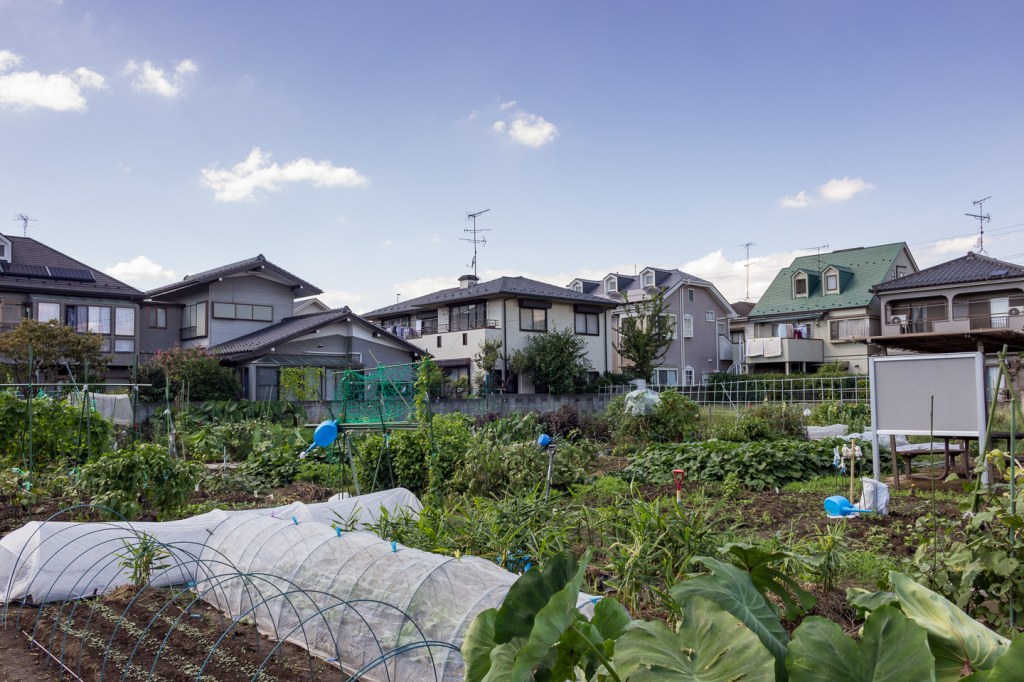Explore The Urban Gardening Phenomenon In Japan: Uncover The Secrets Of Successful Urban Gardening In Japan Today!
Urban Gardening in Japan
Introduction
Dear Readers,
1 Picture Gallery: Explore The Urban Gardening Phenomenon In Japan: Uncover The Secrets Of Successful Urban Gardening In Japan Today!

Welcome to our article on urban gardening in Japan. In recent years, this practice has gained immense popularity not only in Japan but also around the world. Urban gardening refers to the cultivation of plants and vegetables in urban areas, where space is limited. It provides city dwellers with the opportunity to reconnect with nature and enjoy the benefits of growing their own food. In this article, we will explore the various aspects of urban gardening in Japan and why it has become such a significant trend.
Overview of Urban Gardening in Japan

Image Source: raxcdn.com
Urban gardening in Japan has a long history, dating back to the Edo period. However, it has seen a resurgence in recent years due to various factors. One of the main reasons is the increasing interest in sustainable living and environmental conservation. Additionally, the high cost of fresh produce in cities has also motivated people to start their own gardens. Today, urban gardening in Japan takes various forms, including rooftop gardens, balcony gardens, and community gardens.
What is Urban Gardening?
Urban gardening, also known as urban agriculture, refers to the practice of growing plants and vegetables in urban areas. It involves utilizing limited space creatively to create green spaces and cultivate crops. The aim is to create a sustainable and self-sufficient environment, even in densely populated cities. Urban gardening can be done in various ways, including vertical gardening, hydroponics, and container gardening.
Who is Involved in Urban Gardening?
Urban gardening in Japan attracts a diverse range of individuals and communities. It is not limited to experienced gardeners but appeals to people of all ages and backgrounds. Many urban gardening initiatives are community-driven, with residents coming together to transform unused spaces into vibrant gardens. Schools, universities, and companies are also actively involved in promoting urban gardening as a means of education and environmental awareness.
When Did Urban Gardening Gain Popularity in Japan?
The recent surge in urban gardening in Japan can be attributed to the early 2000s. As concerns about food safety and environmental sustainability grew, more individuals and communities started exploring alternative ways to grow their own food. Government support and initiatives also played a crucial role in promoting urban gardening and providing resources to aspiring gardeners.
Where Can You Find Urban Gardens in Japan?
Urban gardens can be found throughout Japan, particularly in urban areas. Rooftop gardens are popular in cities like Tokyo and Osaka, where space is limited. Balcony gardens are also common, allowing residents to utilize their small outdoor spaces effectively. Community gardens are scattered across neighborhoods, providing a shared space for residents to come together and cultivate plants.
Why Choose Urban Gardening in Japan?
Urban gardening in Japan offers numerous benefits for individuals and communities. Firstly, it allows people to have access to fresh, organic produce, reducing their reliance on store-bought vegetables. It also promotes a sense of community and fosters social connections, as neighbors come together to create and maintain gardens. Additionally, urban gardening contributes to environmental sustainability by reducing food miles and promoting green spaces in cities.
How Can You Start Urban Gardening?
Starting your own urban garden in Japan is relatively easy, even if you have limited space. Here are some steps to get you started:
Assess your space: Determine how much space you have available, whether it’s a balcony, rooftop, or a small area in your yard.
Choose your plants: Select plants that are suitable for your space and climate. Consider using vertical gardening techniques to maximize your space.
Prepare the soil: Ensure that your soil is nutrient-rich and well-draining. If you don’t have access to soil, consider using hydroponics or container gardening.
Source your materials: Gather the necessary materials, including pots, containers, seeds, and fertilizers.
Start planting: Follow the instructions for each plant and provide adequate care and maintenance.
Monitor and harvest: Regularly check your plants for pests and diseases. Harvest your produce when it’s ready.
Share and connect: Engage with your community and share your gardening experiences. Join local gardening groups or attend workshops to learn more.
Advantages and Disadvantages of Urban Gardening in Japan
Advantages:
Access to fresh, organic produce
Reduced reliance on store-bought vegetables
Promotes environmental sustainability
Creates social connections and community
Utilizes limited urban space effectively
Disadvantages:
Requires time and effort for maintenance
Space limitations in urban areas
Potential challenges with pests and diseases
Dependent on weather conditions
Initial investment in materials and resources
Frequently Asked Questions (FAQs)
Q: Can I start an urban garden if I have no prior gardening experience?
A: Absolutely! Urban gardening is suitable for beginners as it can be adapted to your level of expertise. Start with easy-to-grow plants and gradually expand your garden.
Q: Is urban gardening expensive?
A: While there may be initial costs involved in setting up an urban garden, it can actually save you money in the long run by reducing your grocery expenses. Additionally, there are budget-friendly options available.
Q: Are there any government support programs for urban gardening in Japan?
A: Yes, the Japanese government has implemented various initiatives to encourage and support urban gardening. These include grants, subsidies, and educational programs.
Q: Can urban gardening help reduce food waste?
A: Yes, by growing your own food, you can reduce food waste as you only harvest what you need. It also promotes a more sustainable approach to food consumption.
Q: What are some suitable plants for urban gardening in Japan?
A: Some popular plants for urban gardening in Japan include tomatoes, herbs, leafy greens, radishes, and strawberries.
Conclusion
In conclusion, urban gardening in Japan has become a thriving movement that promotes sustainable living, community connections, and access to fresh produce. By utilizing limited space creatively, individuals and communities are transforming urban areas into green havens. Whether it’s a small balcony garden or a community plot, urban gardening offers numerous benefits for both the environment and the well-being of individuals. So, why not join this growing trend and start your own urban garden today?
Final Remarks
Dear Readers,
Urban gardening in Japan is not just a passing trend but a lifestyle choice that can have a significant impact on our environment and well-being. As you embark on your own urban gardening journey, remember to be patient and enjoy the process. Gardening is not only about growing plants but also about fostering connections with nature and our community. We hope this article has inspired you to explore the world of urban gardening and create your own green oasis in the city.
This post topic: Gardens

